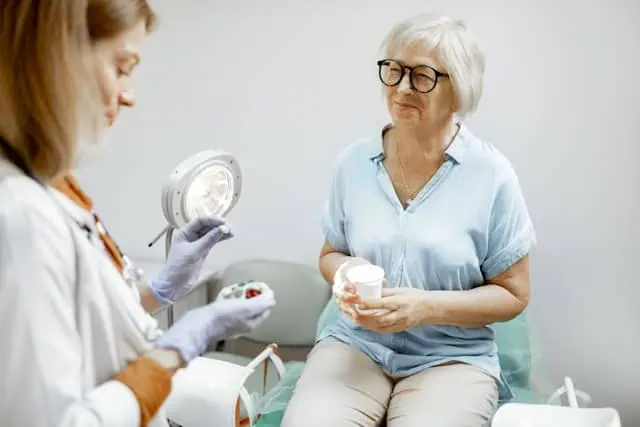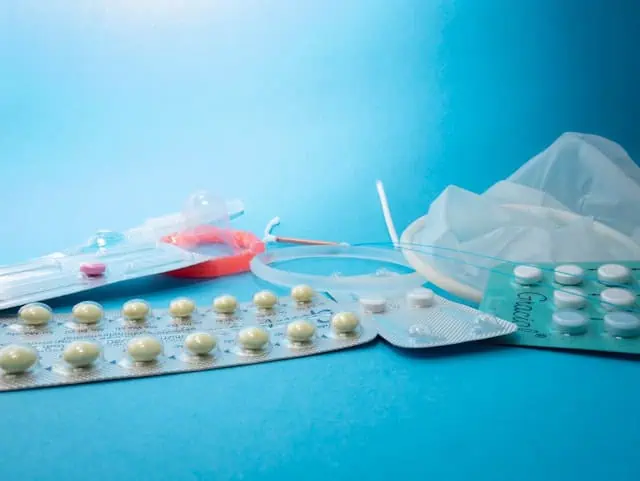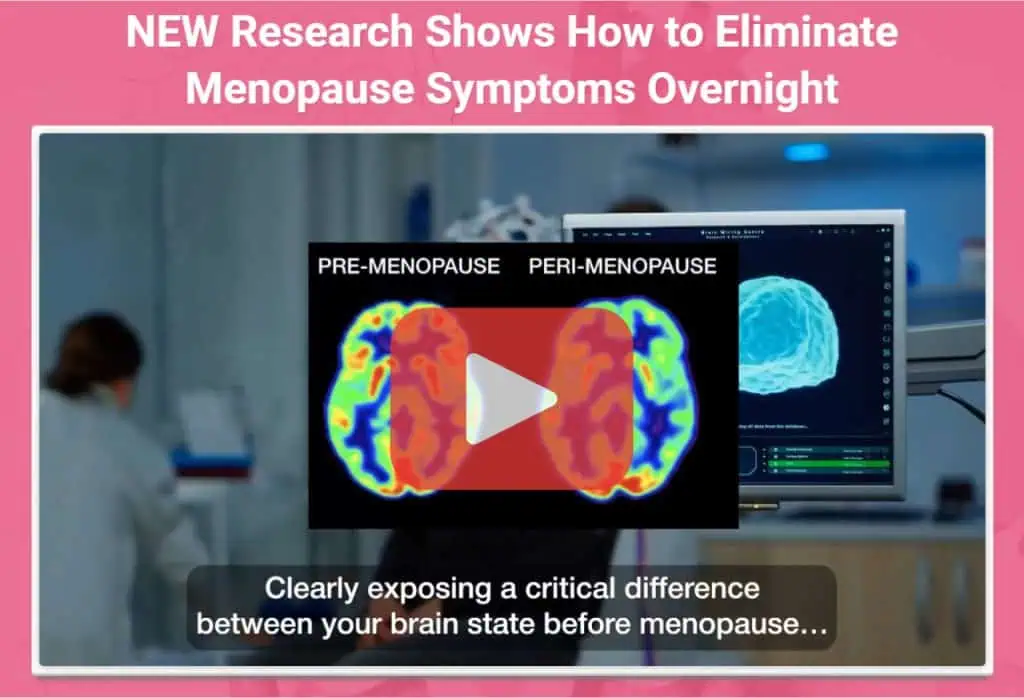Perimenopause marks a significant transition in a woman’s life, leading toward menopause—the moment when menstrual cycles cease entirely. Recognizing when perimenopause is ending can empower individuals with knowledge to adapt to the ensuing life stage. Common signs that the perimenopausal phase is drawing to a close include more spaced out periods leading to their complete stop, and a potential shift in symptoms such as hot flashes and night sweats becoming less frequent.
I’ve noticed these changes in my own journey, tracking alterations like the duration and frequency of my menstrual cycle as well as the intensity of perimenopause symptoms. This natural progression brings about a reduction in fertility and prepares the body for the postmenopausal phase. Being aware of these signs is crucial as it guides my decisions about managing symptoms and my discussions with healthcare providers to support my overall well-being.

Key Takeaways
- Menstrual changes signal the transition nearing its end.
- Symptom intensity may decrease as perimenopause concludes.
- Monitoring signs facilitates informed health discussions.
Understanding Perimenopause
In this section, I will clarify what perimenopause entails, focusing on the hormonal fluctuations that characterize this transitional phase and distinguishing between its early and late stages.
Defining Perimenopause
Perimenopause marks the period leading up to menopause, signaling the end of my reproductive years. This stage typically begins in a woman’s 40s, but can start as early as the late 30s. It’s defined by noticeable shifts in my menstrual cycle length and frequency as my ovaries gradually reduce estrogen production.
Hormonal Changes
Hormones are the messengers in my body that regulate nearly every aspect of my reproductive system. During perimenopause, levels of estrogen, the primary female hormone, fluctuate wildly, and follicle stimulating hormone (FSH) levels increase. These hormonal changes create a cascade of effects throughout my body, affecting everything from my menstrual cycles to my overall health.
Late Perimenopause
The tail end of perimenopause, known as late perimenopause, can be characterized by more pronounced changes. My menstrual cycles may become significantly more irregular, and I may experience longer stretches of time between periods. This phase is a clear indicator that I’m approaching menopause, defined by the absence of a menstrual period for a full twelve months. During late perimenopause, symptoms such as hot flashes may intensify as my body adjusts to lower levels of estrogen.
Recognizing the End of Perimenopause
As I approach the end of perimenopause, certain signs indicate the transition into menopause, a significant change in my reproductive life.
Signs of Transition to Menopause
One of the most obvious signs that I am nearing the end of the perimenopausal phase and entering menopause is menstrual irregularity. Typically, my periods may become less frequent, and the flow might vary from what I’m used to, becoming noticeably lighter or heavier.
Experiencing hot flashes and night sweats are also common indicators. These symptoms might actually begin in perimenopause but often increase in intensity as I transition to menopause. Feeling a sudden warmth spreading through my upper body and face, these hot flashes can last from a few seconds to several minutes.
Another symptom I may notice is vaginal dryness, which can lead to discomfort during sexual activity. This is due to the decrease in estrogen levels which commonly occurs during the perimenopausal transition.
My journey through perimenopause to menopause is deeply personal and varies significantly from woman to woman. While some may deal with intense menopause symptoms, others may pass through this natural phase with simpler signs.
Physical Health Indicators
When approaching the end of perimenopause, I notice quite a few changes in my physical health that signal this transitional phase is coming to a close. These indicators are predominantly related to my menstrual cycles, vaginal health, skin elasticity, and even my bone and heart health.
Irregular Periods and Bleeding Patterns
At the tail end of perimenopause, my periods have become wildly unpredictable. I have come to learn that experiencing less frequent menstrual periods or a complete cessation indicates that menopause is nearing. Changes in bleeding can be alarming, with periods that vary from light spotting to heavy flows.
Vaginal and Skin Changes
I’ve noticed that the moisture levels in my vagina and skin have altered significantly. With the decline in estrogen comes a decrease in vaginal lubrication, often leading to dryness. Similarly, my skin feels less plump and more prone to dryness, signifying hormonal shifts that are part of this menopausal stage.

Osteoporosis and Heart Health
Since estrogen plays a role in heart and bone health, the waning levels during perimenopause affect these areas too. It’s crucial for me to monitor my bone density to preempt the risk of osteoporosis, while also keeping an eye on cardiovascular symptoms that may arise due to hormonal changes impacting my heart.
Symptoms and Body Changes
As I approach the end of perimenopause, I’ve noticed that the symptoms often become more predictable. Understanding these changes helps me manage my expectations and seek appropriate care.
Hot Flashes and Night Sweats
Hot flashes are sudden feelings of warmth, often most intense over the face, neck, and chest, which can cause me to sweat and turn red. During the night, these hot flashes can morph into night sweats, disrupting sleep. Even though the frequency may decrease, changes in body temperature are still common as I near the transition to menopause.
Mood Changes and Psychological Effects
The hormonal fluctuations in my body during this time lead to mood swings, with feelings of irritability or sudden tears not being uncommon. Depression and anxiety may also emerge or worsen. It’s important to recognize these as possible mood changes associated with perimenopause and to seek support when needed.
Sleep Disturbances
Sleep problems, such as insomnia, are symptoms I’ve been mindful of. Even when fatigue hits, I may find myself unable to sleep, or I might wake up frequently during the night. Such sleep disturbances are a hallmark of the hormonal transition, with decreased estrogen levels often to blame.
The experiences of perimenopause are unique to each individual, but recognizing and understanding these symptoms allows for effective management strategies.
Supplements
There’s a number of supplements available that can directly help with a number of symptoms, including sleep disturbances such as MenoPhix, Vitl Sweet Sleep, MenoPace and Sleep Complex
Impact on Fertility and Reproduction
As I approach the end of perimenopause, I notice significant changes in my reproductive system that influence my fertility levels. These transformations are a natural part of the aging process and affect the production and release of eggs from my ovaries.

Fertility Considerations in Perimenopause
In perimenopause, my menstrual periods become irregular, a clear sign that fertility is declining. During this stage, there may still be occasional ovulation, meaning pregnancy can still occur, although it becomes less likely. The eggs that my ovaries release are older and may not be fertilized as easily. Additionally, hormonal fluctuations can lead to changes in the menstrual cycle’s length and flow, indicating variations in my fertile windows.
My understanding is corroborated by credible medical sources, such as the data on menstrual cycle changes and the drop in fertility during perimenopause. These changes are an expected part of the transition to menopause.
Managing Perimenopause
In my journey through perimenopause, I’ve learned that combining lifestyle adjustments, medical interventions, and strong support systems is key to managing this transitional stage effectively.

Lifestyle Modifications
My daily routine now includes dietary changes and regular exercise to mitigate perimenopausal symptoms. I focus on a balanced diet that is rich in calcium and vitamin D to support bone health, and I incorporate foods like flaxseeds, which are thought to have estrogen-like effects. Regular physical activity, particularly weight-bearing and muscle-strengthening exercises, has been invaluable for managing my weight and improving my mood.
Medical Treatments and Therapies
When my symptoms became more intense, I explored medical treatments with my healthcare provider. Together, we considered options such as hormone replacement therapy (HRT) for severe hot flashes and night sweats. I’ve learned that HRT should be personalized, weighing the benefits against possible risks. For me, non-hormonal medications have also been on the table to address specific symptoms like vaginal dryness and mood swings.
Self-Care and Support Systems
Crucially, I’ve learned the importance of self-care and cultivating a robust support system. Mindfulness practices and adequate rest have helped me manage stress and improve sleep quality. Moreover, I cannot overstate the value of joining support groups. Sharing experiences and solutions with others who understand what I’m going through has made a significant difference in my perimenopausal journey.

Consulting Health Care Providers
In dealing with the complexities of perimenopause, I’ve learned the value of a solid relationship with health care providers. Their expertise is pivotal for navigating the transition with confidence and for obtaining a precise diagnosis.
When to See a Doctor
I pay close attention to my body’s cues. As menopause symptoms and perimenopause symptoms can closely mirror each other, I visit my doctor when changes intensify or disrupt my daily life. Depression, moodiness, and severe menopause transition signs warrant a professional consultation. If I experience these symptoms persistently, I don’t hesitate to seek medical advice.
Diagnosis and Monitoring
Diagnosing perimenopause typically involves discussing my family history and symptoms with my doctor. My doctor may conduct tests to rule out a thyroid problem or other conditions with similar symptoms. It’s crucial for me to have regular follow-ups, as they allow my doctor to monitor my progression towards menopause and adjust any treatments I may be receiving. This ongoing dialogue ensures any changes, such as an escalation of moodiness or the onset of depression, are addressed promptly and effectively.
Postmenopausal Health Considerations
After the menopausal transition, I understand that postmenopause marks a new phase in life with unique health considerations that need close attention. It’s a period to focus on well-being, keeping an eye on health risks such as heart disease and osteoporosis.
Postmenopause and Overall Health
I’m aware that the absence of menstrual periods for 12 consecutive months usually indicates the start of postmenopause. With the hormonal changes that occur, I can face an increased risk of certain health conditions. For example, the decreased production of estrogen can affect my heart health, potentially leading to higher cholesterol levels and greater risk for cardiovascular events. It’s crucial for me to monitor my blood pressure and cholesterol regularly.
Bone density is another concern; reduced estrogen levels contribute to osteoporosis, making me more susceptible to bone fractures. I need to ensure a diet rich in calcium and vitamin D, and engage in weight-bearing exercises to maintain bone strength.
Long-Term Risks After Menopause
I also watch for other long-term risks associated with postmenopause. Cancer risks, particularly breast and ovarian, call for regular health screenings. Maintaining a healthy weight is another challenge; postmenopausal weight gain is common, increasing the risk of obesity-related conditions. I stay active and eat a balanced diet to manage this effectively.
Bladder problems and urinary incontinence may become more prevalent due to the weakening of pelvic floor muscles. Kegel exercises are vital for strengthening these muscles and promoting better bladder control. Vulvovaginal atrophy can lead to discomfort and diminished sexual function. I recognize these issues are not merely discomforts but indicators of my body’s health state that might require clinical attention and possible use of estrogen therapy for relief.
By paying attention to these facets of health after the menopausal transition, I am taking important steps towards ensuring a healthier and more comfortable postmenopausal phase. Regular consultations with my doctor aid in monitoring and managing these risks effectively.
Frequently Asked Questions
In my experience, understanding the hallmarks of perimenopause winding down can be quite valuable for many women. Recognizing these signs can provide a sense of readiness for the next phase of life, menopause. Here, I address commonly pondered questions based on my knowledge and credible health resources.
How can you tell if you are approaching the final stage of perimenopause?
I find that one definitive way to know you’re approaching the final stage of perimenopause is the increased irregularity of menstrual cycles. Periods may become erratic and unpredictable as you near menopause.
What does the last menstrual period before menopause typically look like?
The last menstrual period before menopause often varies greatly among women. Some may experience an unusually heavy flow, while others might notice it to be lighter and shorter than normal.
What are the most common symptoms experienced in the latter part of perimenopause?
During the latter part of perimenopause, I note that many women report hot flashes, night sweats, sleep disturbances, and mood swings as among the most common symptoms they experience.
Are there any less commonly discussed symptoms that occur during the end of perimenopause?
Less commonly discussed symptoms occurring toward the end of perimenopause can include changes in libido, vaginal dryness, and sometimes an increase in urinary urgency or incontinence.
What is the average duration of perimenopause before reaching menopause?
The average duration of perimenopause leading up to menopause typically spans about 4 to 8 years. However, I understand this can vary widely from person to person.
Can you list the symptoms that indicate the transition from perimenopause to menopause is nearly complete?
Symptoms that signal the near completion of the perimenopausal transition include a full year without a menstrual period, which marks the entry into menopause, along with a possible alleviation of certain perimenopausal symptoms like erratic periods.









